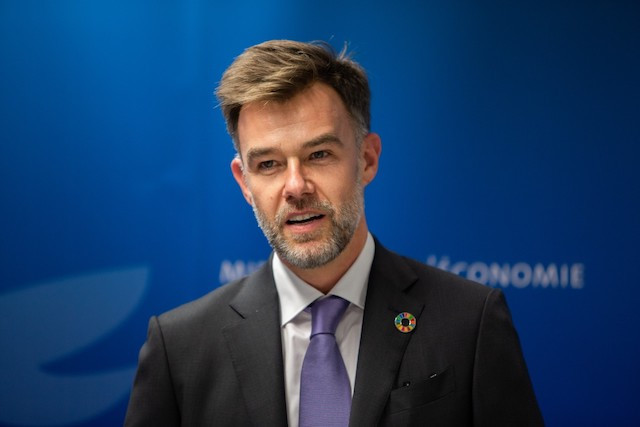The “Ons Wirtschaft vu muer” (Our economy of tomorrow) strategy revolves around six pillars aimed at re-building Luxembourg’s economy from the pandemic crisis but also setting the course for the coming years, even decades.
“The roadmap is our instrument to design the post-covid recovery and to make our economic fabric more resilient by 2025,” Fayot (LSAP) said on Monday.
The main axes are:
- Speeding up the digitalisation of the economy;
- Supporting the transition to a circular economy through digitalisation;
- Developing strategic and resilient value chains;
- Enabling a secure and reliable transition of the data economy;
- Ensuring a sustainable digital transition;
- Offering a favourable investment environment and instruments allowing to achieve sustainability while remaining competitive.
Born out of the context of the pandemic, the plan must also be in line with recovery plans submitted to the EU as well as helping Luxembourg meet its climate targets to reduce emissions by 55% by 2030 and be climate neutral by mid-century. And it must respond to global megatrends, such as digitalisation, climate change and geopolitics.
The roadmap presents a lofty vision of Luxembourg as a sustainable and competitive economy, digital leader, leading logistics hub and major player in the development of resilient and low-carbon value chains.
The price tag meanwhile is not settled. “There is no defined envelope. Each project will be able to find a place in the budgets according to its state of maturity,” said Fayot.
Six pilot projects have been chosen to make concrete the ambition to move to a data-driven and circular economy.
These include in the short-term:
- A Luxembourg platform for data exchange services;
- Smart industrial and business zones;
- The product circularity data sheet to establish an international and official norm on circular product properties;
- A regional strategic value chain in medical diagnostics;
- Digital procurement;
- A secure Luxembourg Open Cloud platform, compatible with the EU’s Gaia-X cloud initiative.
Five medium-term projects have also been chosen, including developing a European Digital Innovation Hub in Luxembourg by 2025, positioning the country in EU hydrogen projects and other European initiatives mostly in cybersecurity and digitalisation.
This article was first published in French on Paperjam. It has been translated and edited for Delano.
